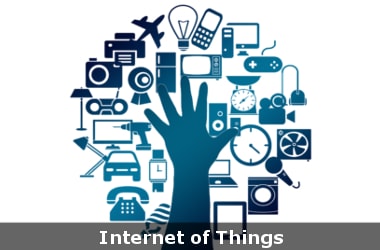
The number of units under Internet of Things (IoT) is expected to grow exponentially to 1.9 billion units in India by 2020 or about USD 9 billion, says a report.
A rapidly growing hub for IoT solutions, the country's IoT market size in this area is expected to increase about 7 times - from USD 1.3 billion last year to USD 9 billion by 2020.
This is as per consultancy firm Deloitte in its TMT Predictions 2017.
IoT refers to the devices, other than computers and smartphones, connected to the Internet.
Deloitte estimates the current number of such devices in the country to be around 60 million.
The report said IoT solution deployment for digital utilities or smart cities and in the manufacturing, transport and logistics and automotive industries would drive the demand for industrial IoT applications going forward.
By 2020, the company believes industries such as utilities, manufacturing, automotive, transportation and logistics are expected to see highest adoption levels of IoT in India.
The government's planned investment of about USD 1 billion for 100 smart cities, over the next five years, is expected to be a key enabler for IoT adoption across these industries.
Additionally, industries such as healthcare, retail, and agriculture are also expected to make significant progress in IoT adoption.
India needs to continue to build capabilities across technology areas of sensors to adapt to rugged climate, terrain along with network infrastructure, standards and augmented intelligence and behaviour.
While telecom operators would be initially focusing on providing SIMs for IoT devices and solutions, the report expects that in the next two years, telcos would unveil new IoT strategies or stretch the existing one to have higher level of participation in the overall end-to-end IoT ecosystem and economy.
Leading operators would make significant investments to extend their IoT capabilities by providing data analytics and storage and in some cases for more specialised areas operators would enter into partnerships with companies.
Companies would provide cheaper sensors, cloud data storage, analytics, visualisation platforms providing remote monitoring, dashboards and reports.
They offer field service platforms providing automated maintenance tickets and technical assistance.